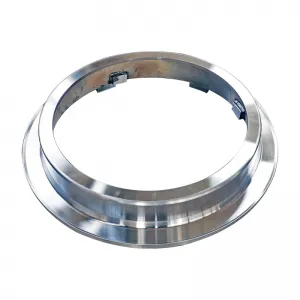nov . 29, 2024 17:45 Back to list
OEM Carbon Steel Castings for Durable and High-Quality Industrial Applications
The Evolution and Importance of OEM Carbon Steel Casting
In the manufacturing sector, Original Equipment Manufacturer (OEM) carbon steel casting plays a crucial role in producing a wide range of components essential for various industries. The process of casting involves pouring molten metal into a mold to create a specific shape, which, in the case of carbon steel, offers a unique combination of strength, durability, and versatility. This article explores the significance of OEM carbon steel casting, its processes, and applications.
Understanding Carbon Steel Casting
Carbon steel is an alloy that primarily consists of iron and carbon, with varying carbon content that imparts different properties to the material. The casting process is an ancient technique that has evolved significantly with technological advancements. Today, OEM carbon steel casting utilizes modern methodologies and technologies to enhance productivity, precision, and efficiency.
The Casting Process
The carbon steel casting process involves several stages, including pattern making, mold preparation, melting, pouring, and finishing.
1. Pattern Making The first step is to create a pattern, usually from wood, metal, or plastic, which replicates the final product's shape. This pattern is crucial as it determines the size and contours of the final cast.
2. Mold Preparation The pattern is placed in a mold made of sand, metal, or ceramic. The mold is created to ensure that it can withstand the high temperatures of molten steel. Various techniques are used for mold-making, with sand casting being the most common for carbon steel components.
3. Melting Carbon steel is melted in an industrial furnace, reaching temperatures of around 1500°C (2732°F). The melting process requires precise control to maintain the desired chemical composition and properties.
4. Pouring Once melted, the molten steel is carefully poured into the prepared mold. This step requires skill to prevent defects such as air pockets or inclusions.
5. Finishing After the steel cools and solidifies, the mold is removed, and the cast part is finished using techniques like grinding, machining, or polishing to meet the required specifications.
oem carbon steel casting

Advantages of OEM Carbon Steel Casting
1. Strength and Durability Carbon steel is renowned for its strength and resistance to wear and tear, making it ideal for heavy-duty applications. OEM casting can produce parts that withstand extreme conditions.
2. Cost-Effectiveness Casting is often more economical than other manufacturing methods, especially for large production runs. The ability to create complex shapes with minimal material waste contributes to its cost efficiency.
3. Versatility OEM carbon steel casting processes can produce a wide variety of components, from small intricate parts to large industrial applications, making it suitable for numerous industries, including automotive, aerospace, construction, and machinery.
4. Customization OEM manufacturers can tailor the casting process to meet specific customer requirements, allowing for the production of unique components that adhere to particular industry standards.
Applications of OEM Carbon Steel Casting
The applications of OEM carbon steel casting are vast. In the automotive industry, components such as crankshafts, engine blocks, and transmission cases are often made using this casting method. In the construction sector, carbon steel castings are used for structural components and fixtures, while machinery industries rely on these castings for gearboxes, housings, and support frames.
Moreover, the energy sector utilizes carbon steel castings in turbine housings and pressure vessels due to their ability to tolerate high stress and temperatures.
Conclusion
OEM carbon steel casting is an integral part of modern manufacturing, providing essential components that contribute to the functionality and reliability of various industries. As technology advances, the casting processes continue to evolve, improving efficiency and sustainability. Understanding the importance of OEM carbon steel casting helps appreciate its widespread applications and the innovations driving its future. With an ever-increasing demand for high-quality, durable components, the role of carbon steel casting is poised to remain vital in the global manufacturing landscape.
-
Centrifugally Cast Iron Water Main Pipe | Ductile Iron Solutions
NewsAug.24,2025
-
Durable Cast Steel Concrete Pipe Mold Bottom Rings & Base Trays
NewsAug.23,2025
-
Centrifugally Cast Iron Water Main Pipe for Reliable Mains
NewsAug.22,2025
-
Durable Centrifugally Cast Iron Water Main Pipe
NewsAug.11,2025
-
Centrifugally Cast Iron Water Main Pipes for Reliability
NewsAug.10,2025
-
High-Quality Centrifugally Cast Iron Water Main Pipes
NewsAug.09,2025


